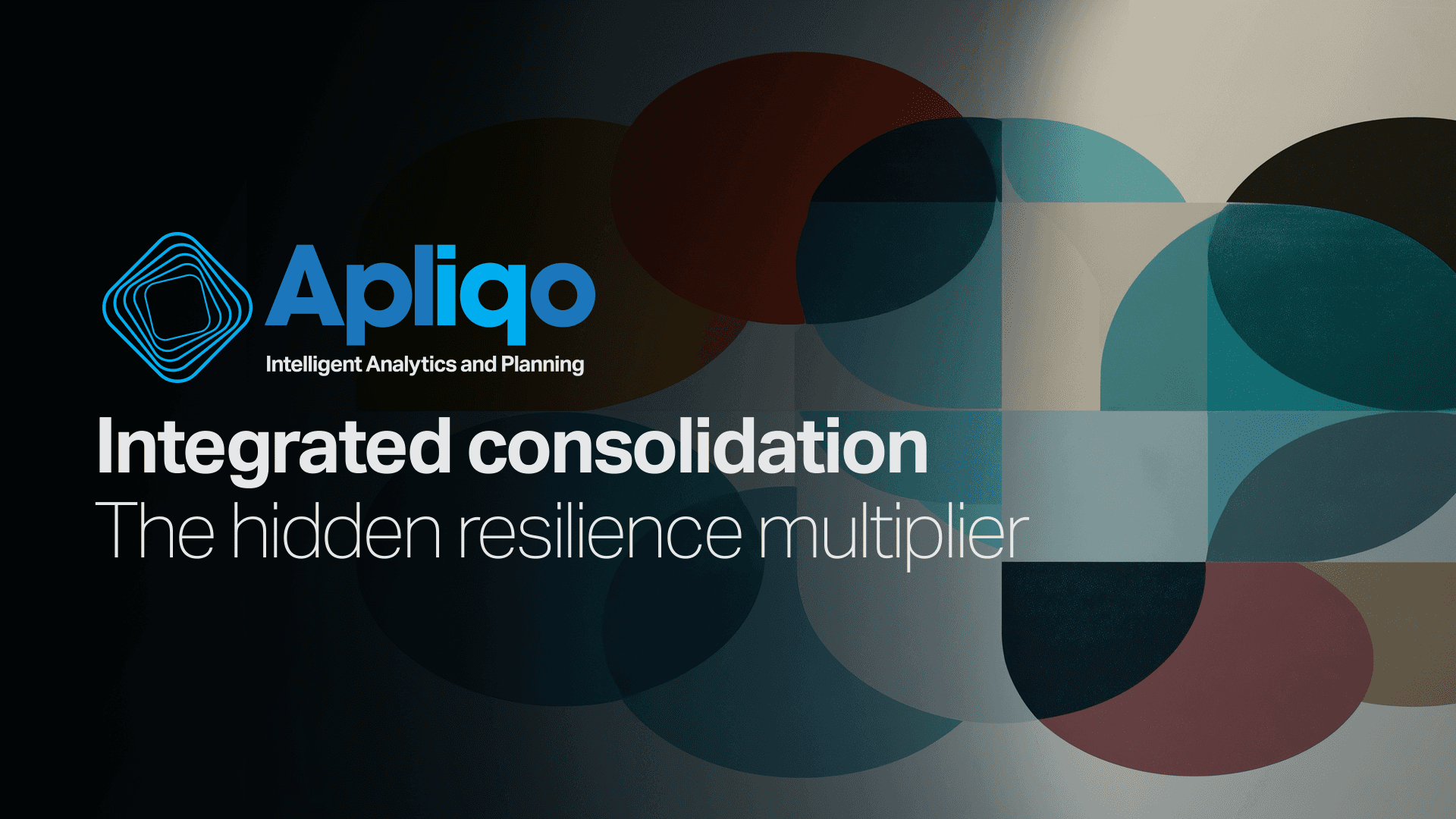The hidden FP&A pitfalls that kill M&A value creation
Most merger and acquisition failures aren't caused by strategic missteps or cultural clashes, but rather by operational mistakes within financial planning and analysis functions. This article reveals six critical FP&A pitfalls that consistently decrease value during integrations. These same challenges affect any large organisation harmonising FP&A processes across business units, geographies, or product lines. Learn how to identify these value destroyers early and implement the three core principles that separate successful integrations from costly failures.
Nov 4, 2025
//
7
min read
Subscribe to Apliqo Insights
The statistics are sobering: 70-75% of mergers and acquisitions fail to create shareholder value. While leadership teams often blame cultural misalignment or strategic missteps, a closer examination reveals that many deals flounder on seemingly mundane operational failures, particularly within financial planning and analysis functions.
But here's what makes this relevant beyond M&A: these same pitfalls plague any large organisation attempting to harmonise FP&A processes across diverse business units, geographies, or product lines. The integration challenges that derail acquisitions are identical to those facing multinational corporations trying to establish consistent financial planning frameworks across their existing operations.
Having worked through many M&A situations with our clients, we've observed that FP&A teams consistently make the same critical errors, often with the best intentions. These aren't dramatic failures that make headlines; they're quiet value destroyers that compound over months and years, ultimately determining whether an organisation achieves operational excellence or remains trapped in inefficient processes.
Planning model purgatory
The most insidious mistake occurs when organisations maintain parallel planning models "temporarily" during integration. What begins as a pragmatic six-month bridging strategy inevitably extends into a permanent nightmare of duplicate processes, reconciliation exercises, and analytical blind spots.
Consider an example where the parent company's sophisticated IBM Planning Analytics environment operated alongside the target's Excel-based budgeting process for 18 months. The FP&A team spent 40% of their time each quarter reconciling differences between the two systems rather than analysing business performance. Worse, strategic decisions were delayed for weeks whilst teams debated which model's outputs were more reliable.
The root cause isn't technical complexity. It's organisational inertia dressed up as prudent risk management. Teams fear disrupting quarterly reporting cycles or alienating newly acquired colleagues by forcing immediate change. This misguided caution typically costs more in lost productivity than a rapid, well-executed consolidation would have risked.
Forecasting cycle chaos
M&A deals rarely close at the start of a fiscal year, yet FP&A teams consistently underestimate the complexity of harmonising forecasting cycles mid-stream. The result is a year or more of disjointed planning processes that obscure business performance and hamper decision-making.
The solution requires accepting short-term disruption for long-term clarity. Successful integrations often implement abbreviated planning cycles immediately post-close, forcing both organisations onto a unified timeline within 90 days rather than waiting for the "natural" annual cycle.
KPI misalignment
Perhaps no area causes more long-term damage than the failure to standardise key performance indicators early in the integration process. When FP&A teams attempt to preserve existing metrics "to maintain continuity," they inadvertently create a Tower of Babel where identical concepts are measured differently across the organisation.
This isn't merely a reporting inconvenience. Different KPI definitions fundamentally alter how business units make decisions, allocate resources, and evaluate performance. An example of this might be where an acquirer discovers that their acquired subsidiary continued measuring customer acquisition costs differently, leading to dramatically different conclusions about product line profitability and investment priorities.
The acquiring company might calculate CAC including full-loaded sales team costs and allocated marketing spend. The subsidiary might use a narrower definition that excludes significant overhead allocations. For months, strategic planning sessions can devolve into arguments about methodology rather than business strategy. The delay in resolving these definitional differences ultimately leads to significant misallocation of marketing investment.
Integration governance vacuum
Most FP&A integration failures stem from a common source: the absence of clear decision rights and escalation mechanisms. When process conflicts arise (and they always do), teams often default to compromise solutions that satisfy no one and optimise nothing.
Effective integration requires a form of benevolent dictatorship within each functional area. Someone must have unambiguous authority to make binding decisions about the chart of accounts structures, reporting hierarchies, and analytical frameworks. Without this clear governance, integration becomes a series of committee decisions that prioritise consensus over effectiveness.
The most successful integrations we've observed establish these decision rights on day one, often before the deal closes. They also create rapid escalation paths for conflicts that can't be resolved at the operational level, preventing minor disagreements from becoming month-long debates.
Quarterly reporting quicksand
The pressure to maintain quarterly reporting schedules during integration creates a vicious cycle where short-term expediency undermines long-term effectiveness. FP&A teams, desperate to meet earnings call deadlines, implement workarounds and manual processes that become entrenched over time.
Your company should not spend months manually adjusting acquired subsidiary data to fit your reporting format. Instead, you should invest the time and effort required to properly integrate the systems. The cumulative cost of manual interventions often exceeds the initial integration investment, whilst creating numerous opportunities for errors and inconsistencies.
The synergy tracking mirage
M&A business cases invariably promise significant synergies, yet FP&A teams consistently fail to implement tracking mechanisms that can actually validate these assumptions. Too often, synergy reporting becomes an exercise in creative accounting rather than rigorous analysis.
The fundamental problem is baseline establishment. Without clean, auditable baselines for costs and performance metrics prior to integration, it's impossible to distinguish genuine synergies from normal business fluctuations. Teams that wait until after integration begins to establish these baselines find themselves trying to reconstruct historical data whilst managing ongoing changes – a nearly impossible task.
The path forward
These pitfalls aren't inevitable consequences of M&A complexity; they're predictable failures that result from treating integration as a series of tactical challenges rather than a strategic transformation. The most successful FP&A integrations follow three core principles:
Speed over perfection: Rapid decisions and quick iterations consistently outperform prolonged analysis and consensus-building. Perfect solutions that arrive too late create more problems than good-enough solutions implemented quickly.
Clarity over diplomacy: Someone must have decision-making authority, and difficult conversations must happen early rather than being deferred indefinitely.
Integration over preservation: Maintaining separate systems and processes feels safer but consistently creates more risk than thoughtful consolidation.
The FP&A function's role in M&A success extends far beyond financial modelling and due diligence. When integration is executed thoughtfully, FP&A becomes the operational backbone that enables strategic value creation. When these common pitfalls are ignored, even the most promising acquisitions can find themselves trapped in a maze of inefficient processes and missed opportunities.
For organisations planning acquisitions or currently managing integrations, addressing these FP&A challenges isn't just operational housekeeping; it's the difference between value creation and value destruction. In an environment where acquisition multiples remain elevated and competition for quality targets intensifies, getting the integration fundamentals right isn't optional; it's the only sustainable path to M&A success.
If you’re looking to optimise your FP&A capabilities for your next acquisition, Apliqo's suite of solutions can help you avoid these common integration pitfalls and accelerate value creation. Get in touch today to find out more.









